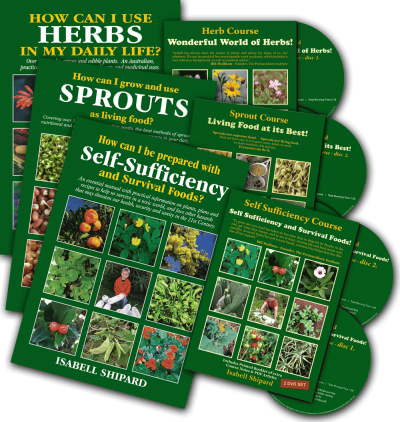Have you ever eaten flowers from your garden?
From the earliest times, the blossoms of plants were used for sustenance, at first by trial and error and by watching what birds and animals ate. As time went on, traditions were established: it became known which flowers were edible and this information was passed on within families.
To continue this tradition safely, correct identification of the plants growing in your home garden, is essential knowledge. While we know that there may be a number of toxic plants in our gardens, if the need arises due to food shortage, it is good to be aware of which ornamentals (many known as cottage garden plants) provide flowers that can be eaten. Many people remember when they were children eating a nasturtium flower at Grandma’s or sucking thedelicious end of the petunia or honeysuckle to enjoy the drop of nectar stored there.
Beautiful flowers share with us the highest sentiments from nature and give aesthetic pleasure and joy. Many flowers also have an uplifting and energising perfume that delights the sense of smell, and beautiful aromas creates a feeling of wellbeing and may strengthen our immune system. No doubt this is why, when life gets too hectic, it is good to take time … to smell the roses. Edible flowers are rich in essential oils, which can help build up electrical energy in the body and also provide nutrients and healing properties.
… … omitted text, please see How can I be prepared with Self-Sufficiency and Survival Foods? for full text.
Many ornamental plants are poisonous. All culinary herbs used to flavour foods have edible flowers and can be enjoyed in a variety of ways. For example: as a garnish on meals, to decorate and flavour drinks, to add colour to plain meals, made into flower fritters, floating in soups, added to cakes and biscuits, butters or tossed in salads.

Well-known edible flowers of ornamental plants may be used, similarly. However, some kinds will have quite big blossoms: as a garnish on a meal, these may look a little large. Daylily flowers and buds can be chopped finely and added to salads to provide a lettuce-like flavour; also add to cold desserts, casseroles, soups, stews and stir-fries. Also add these chopped or whole to a fritter batter. The young white tubers are eaten raw or cooked and taste much like a carrot. Edible flowers used as a garnish may be a wonderful conversation topic at the family meal table and can provide a great opportunity to teach children about herbs, edible plants and their uses. Following is a list of ornamental
flowers that are safe for you to eat:
Calendula Calendula officinalis
Camelia Camelia japonica
Carnations Dianthus sp.
Chamomile Matricaria recutita
and Chamaemelum nobile
Chrysanthemum species
Cornflower Centaurea cyanus
Cowslip Primula veris
Bruisewort / Lawn Daisy Bellis perennis
Dahlia species (flower petals and tubers)
Day lilies Hemorocallis s.p
Elderberry Sambacus nigra, S. candadensis
Forget-me-nots Myosotis sylvatica
Fuchsia Fuschia magellanica
Geranium species; Gladiolus species
Hawthorn Crataegus sp; Heartsease Viola tricolour
Hibiscus species, p 95; Hollyhock Althea rosea
Honeysuckle Lonicera japonica
Lavender Lavendula officinalis
Lilac Syringa vulgaris; Rose species
Stock Matthiola incana
Sunflower Helianthus annuus
Sun jewels Portulaca grandiflora
Sweet Williams Dianthus barbatus
Tulip Tulipa sp; Violet and Pansy Viola sp.
Wallflower Cheiranthus cheirii
Waterlillies Nymphaea sp.
Yucca species; Zinnia Zinnia elegans
Edible flowers can enrich your day, but do ensure that
what you eat is, in fact, the listed species.
… … omitted text, please see How can I be prepared with Self-Sufficiency and Survival Foods? for full text.


